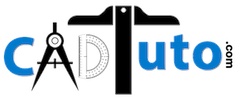To enhance your AutoCAD skills and efficiency, here are 25 valuable tips and tricks:
- Use Keyboard Shortcuts: Learn and use keyboard shortcuts for common commands to speed up your workflow.
- Customize Your Workspace: Tailor the AutoCAD interface to suit your needs and preferences for easier access to frequently used tools.
- Use Object Snaps (OSNAP): Enable and use object snaps for precise drawing and editing.
- Create and Use Templates: Save time by creating templates with your preferred settings and commonly used objects.
- Utilize Layer Management: Organize your drawings using layers to keep related elements together and simplify editing.
- Master the Use of Blocks: Create and insert blocks for repetitive elements to save time and maintain consistency.
- Use the Command Line: Familiarize yourself with command line inputs for efficient drawing and editing.
- Employ Grip Editing: Use grip editing for quick modifications and adjustments to objects.
- Apply Quick Select (QSELECT): Use Quick Select to efficiently select objects based on properties like color, layer, or line type.
- Make Use of External References (XREFs): Use external references to insert other CAD drawings into your current drawing without increasing file size.
- Implement Annotative Objects: Utilize annotative objects for text and dimensions that automatically adjust to the scale of your view.
- Use Data Extraction: Extract data from objects to tables for easy analysis and reporting.
- Utilize Dynamic Blocks: Create dynamic blocks with adjustable parameters for more versatile and adaptable drawing components.
- Master the Array Command: Use array commands for evenly distributing objects in a pattern.
- Learn to Use the Hatch Command: Use hatch patterns effectively for adding textures or indicating materials.
- Understand Layer States: Save and restore layer settings with Layer States Manager for different viewing and printing needs.
- Use the PURGE Command: Regularly use the PURGE command to clean up unused elements and reduce file size.
- Implement the Field Command: Use the Field command for automated text updates like dates or sheet numbers.
- Explore 3D Modeling Tools: If you work with 3D, familiarize yourself with AutoCAD’s solid, surface, and mesh modeling tools.
- Customize Tool Palettes: Create and customize tool palettes for quick access to your most-used blocks, hatches, and commands.
- Use the Measure Command: Use the MEASUREGEOM command for quick measurements of distances, areas, and volumes.
- Employ Parametric Constraints: Use parametric constraints to maintain relationships between drawing geometry.
- Set Up Sheet Sets: Use sheet sets to organize, print, publish, and archive collections of drawings efficiently.
- Use the Divide Command: Use DIVIDE to place evenly spaced points or blocks along an object.
- Stay Updated with New Features: Regularly update your skills and knowledge with the latest AutoCAD features and updates.
Remember, the key to mastering AutoCAD is practice and exploration. Try incorporating these tips into your regular workflow to see what works best for you.

